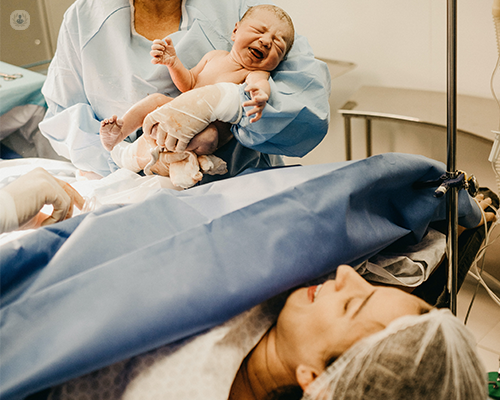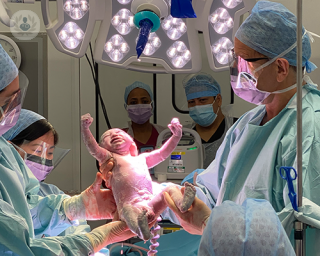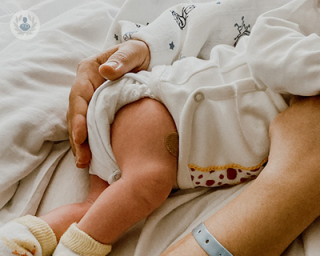Caesarean
Dr Shazia Malik - Obstetrics & gynaecology
Created on: 03-14-2017
Updated on: 09-06-2023
Edited by: Jay Staniland
What is a caesarean?
A caesarean (also referred to as caesarean section or C-section), is performed to surgically remove an unborn baby born from its mother’s womb via an incision through the mother's abdomen.
In most cases, it is a safe procedure for both the mother and the baby. However, being a surgical procedure, it does involve the possible risks of any surgical intervention.

Why is a caesarean performed?
Caesareans can be planned weeks or days in advance (due to the mother’s birthing preference or to known health risks) or suddenly as an emergency procedure during natural birth. This will be performed by a consultant obstetrician.
There are several reasons for a caesarean:
- The mother has a serious illness such as heart disease, uterine fibroids, HIV, or has previously had a caesarean or uterine surgery.
- The mother has as an active herpes infection.
- The size or position of the baby: the baby’s head or its whole body is too big to fit through the vagina.
- The mother has a multiple pregnancy (more than one child in the womb).
- The baby’s health is deteriorating.
- Labour is progressing too slowly or not at all.
- Problems with the placenta and/or the umbilical cord.
What does a caesarean involve?
The process takes place when the woman is awake but epidural anaesthesia or spinal anaesthesia is used to numb any pain.
The caesarean section technique is as follows:
- The surgeon will make an incision through the abdomen just in the upper part of the pubic area.
- The womb and amniotic pouch are opened.
- The baby is removed through the opening.
- The baby is cleaned and the umbilical cord is cut.
- The area of the incision is sanitised and the incision is closed.
The duration of a caesarean section is usually around one hour.
How do you prepare for a caesarean?
As with any surgery, the patient will undergo a physical examination and a study of their clinical history. However, many caesareans are carried out when unexpected problems prevent safe delivery during natural birth. Unexpected problems that pose a risk to the mother and/or baby mean that caesareans are unexpected and therefore, mothers aren’t always prepared to have the surgery.
Aftercare
After a caesarean, the mother usually stays in the hospital for around three to four days to recover from surgery. Overall, the recovery from a caesarean is longer than recovery from a vaginal delivery.
Immediately after the caesarean section, the patient might feel dizzy and nauseous but these are normal symptoms post-surgery. After surgery, the patient will be transferred to a recovery room where her health will be monitored. It’s recommended that the patient tries to walk at least once a day to assist with recovery.
Alternatives to caesarean
Aside from vaginal delivery and a caesarean, there is the alternative of a water birth. In this case, when the contractions begin, the mother is immersed in a bathtub with warm water. The water fosters a calm environment for the baby to be born.
















